Iran: Tabriz Tehran and Kashan
(Thomas;2006)
After crossing the border into Iran (that northwestern part of the country is called Azerbaijan and most people talk a sort of Turkish-Farsi mixture) we ended up in Tabriz. Once a famed oasis, it's now a sprawling city with 1.2m inhabitants. The setting is still breathtaking, though, with a wall of mountains to the north that lights up in a deep red when the sun sets. The picture shows a tiled gateway in the aptly named Blue Mosque.
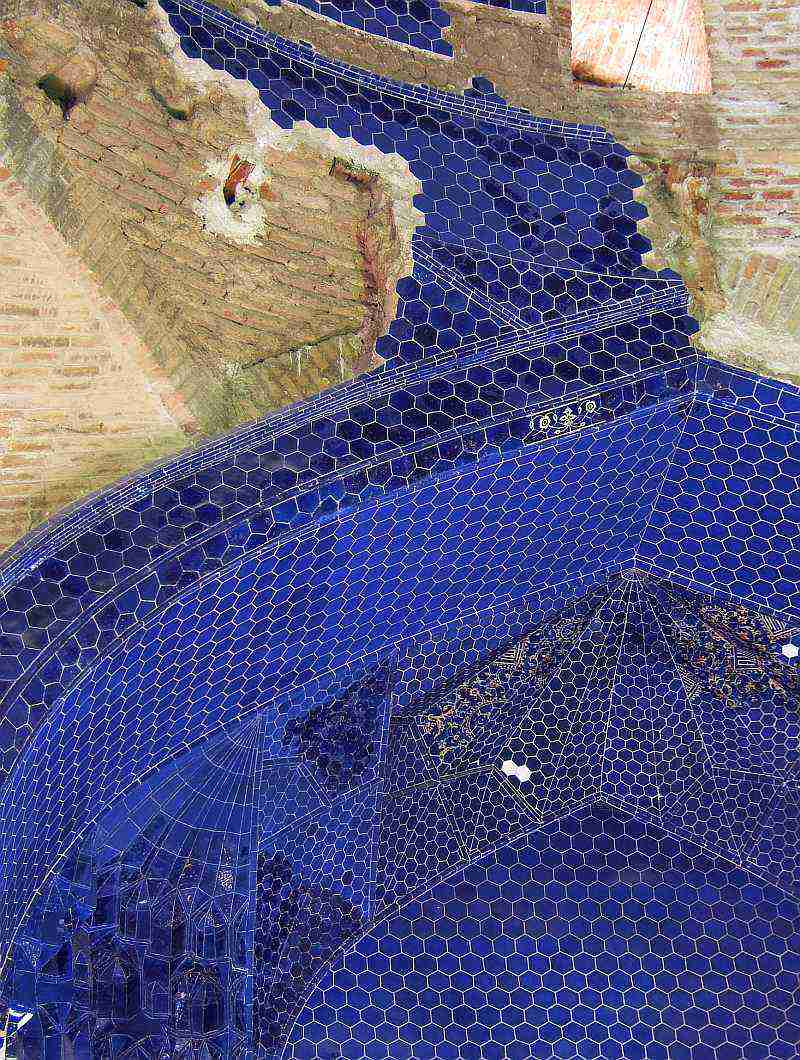
The mosque was build in 1465 and every wall, every surface was covered with these amazing blue tiles. Alas, the building was almost completely destroyed in an earthquake (1773); only the main entrance portal survived. Rebuilding started only in 1951, but nowadays it's a must-see of the region. This is a restored panel with the sort of inlaid tile-work and calligraphy the Central Asian mosques are so famous for.
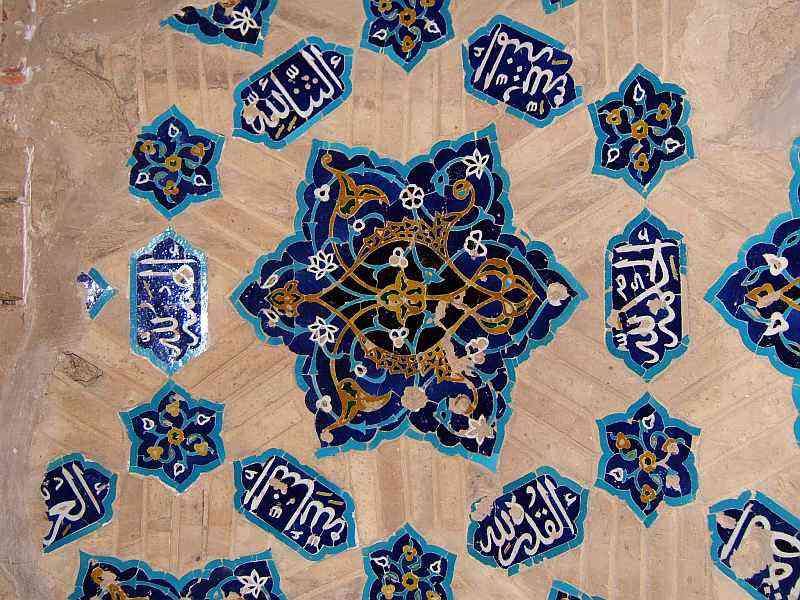
Kandovan is a small village about 50km southwest of Tabriz. Its main claim to fame is that the people there have for ages lived a troglodyte lifestyle. Iranians boast that Kandovan is a sort of mini-Cappadocia and they have a point: the rock-cut houses do have some similarity with the villages of Cappadocia.
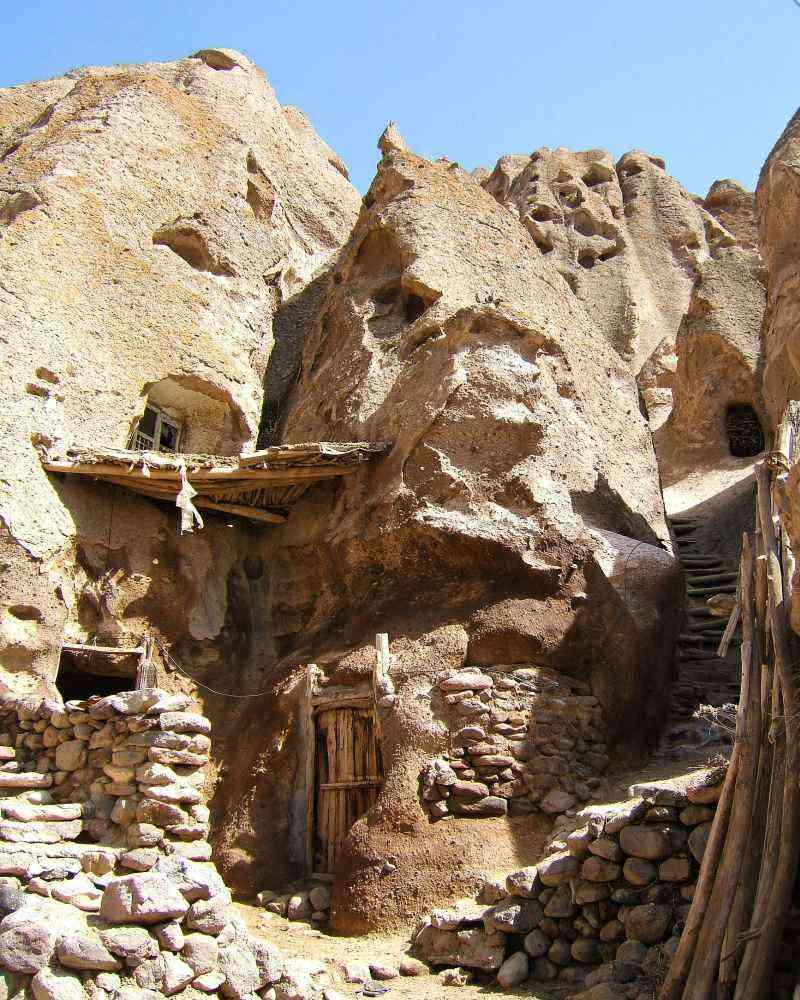
The next photo shows a painting on tiles in the Golestan palace in Tehran. This pile is in the very thick of things and it was the main Royal palace during the 19th and the early 20th centuries, until the then Shah moved to new premises in the north of Tehran (it is indeed nicer and cooler there). The Qajar dynasty who mainly built the Golestan knew something about pomp and gaudiness… the whole huge palace is covered in loud, colourful tiles and mirrors and intricate marble decorations that must have been very expensive, even if they're not always tasteful.
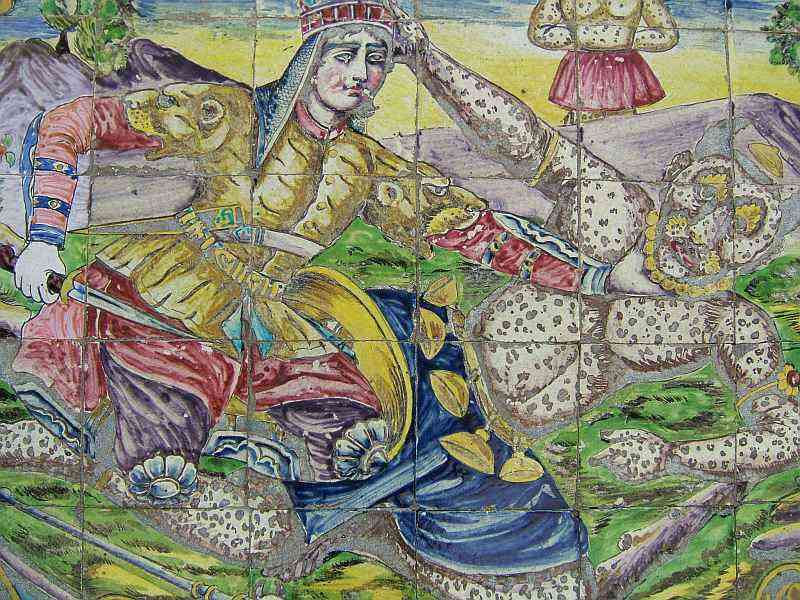
These towers are the minarets of the Madrasa va Masjed-e Sepahsalar, an Islamic school (madrasa) and mosque (masjed). It's famous for its tiles and the calligraphy but sadly we only could see a small part of it as an armed soldier blocked the main entrance with the helpful hint that the building is open just one day in the week… on Thursdays. Probably they tell you on a Thursday that it's open all week, but unfortunately not on Thursdays. Still a beautiful building, from what we could see.
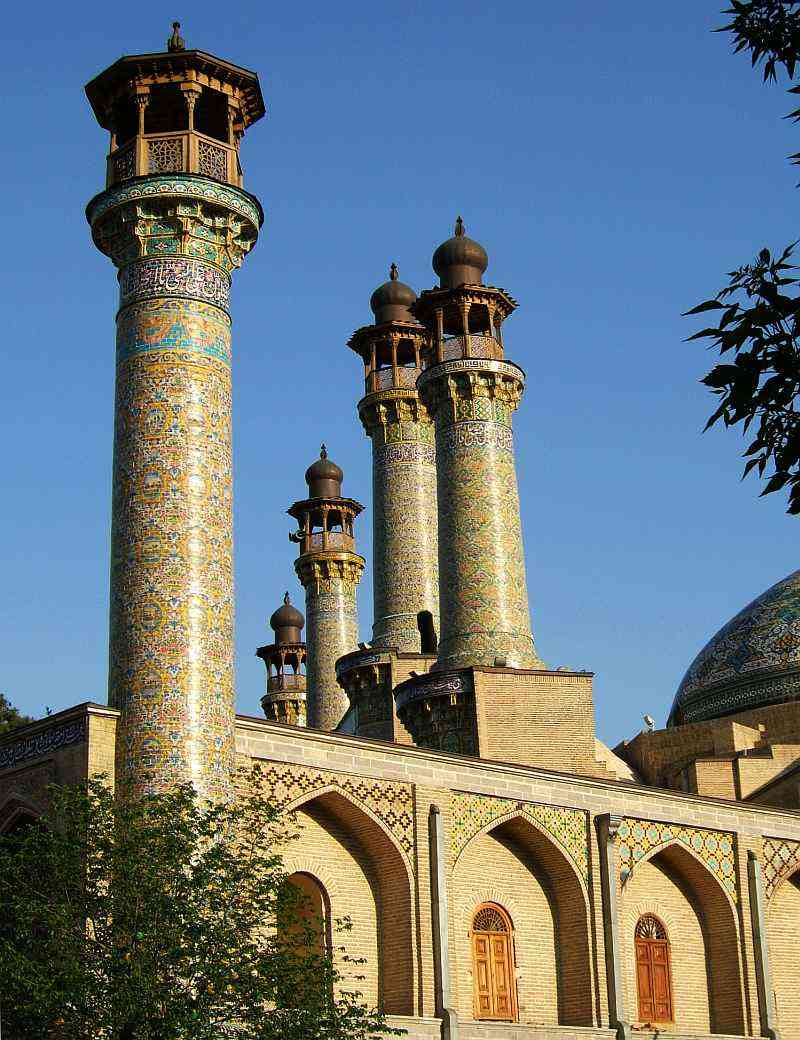
This is the perimeter wall of the compound where the former embassy of the US of A was located. There are many other spots in Tehran where we spotted pretty crude anti-American slogans and paintings. But in most shops we found plenty American products, embargoes notwithstanding: HP printers, Xerox copiers, Microsoft products, Motorola phones, even Coca Cola!
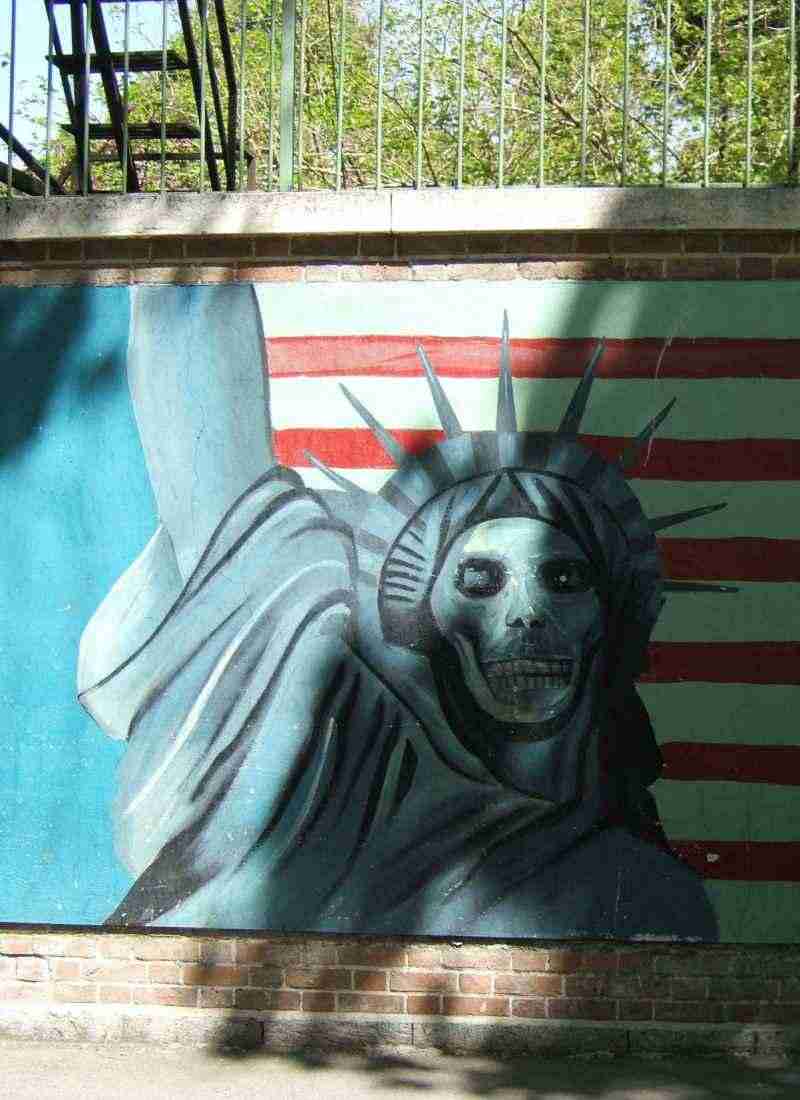
This is the tomb of a Holy Man inside a prayer hall. This sort of building is called an Imamzadeh and it's invariably a bedazzling affair: the walls and ceilings are covered with a multitude of tiny glass chips and mirror shards, all set at an angle to each other and brightly lit, so the resulting reflections are really something to behold. This picture is but a pale reflection:-) of the true dazzle. This specific Imamzadeh is located in the main bazaar of Tehran and though it's a big, splendid building, it was not even mentioned in our guide: that tells you something about the number of these buildings.
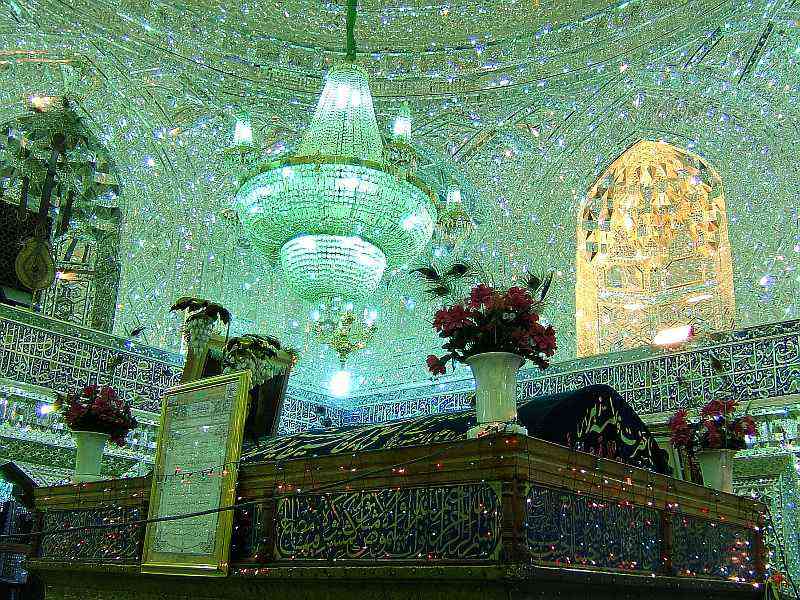
We jump almost 300km to the southeast, to Kashan, a hot, medium-sized town at the fringes of the desert. Kashan sports many beautiful buildings and a rather nice old bazaar. This is the roof of one of the big chambers inside the bazaar where the merchants used to store their wares (what the Turks call a Han and the Arabs a Khan).
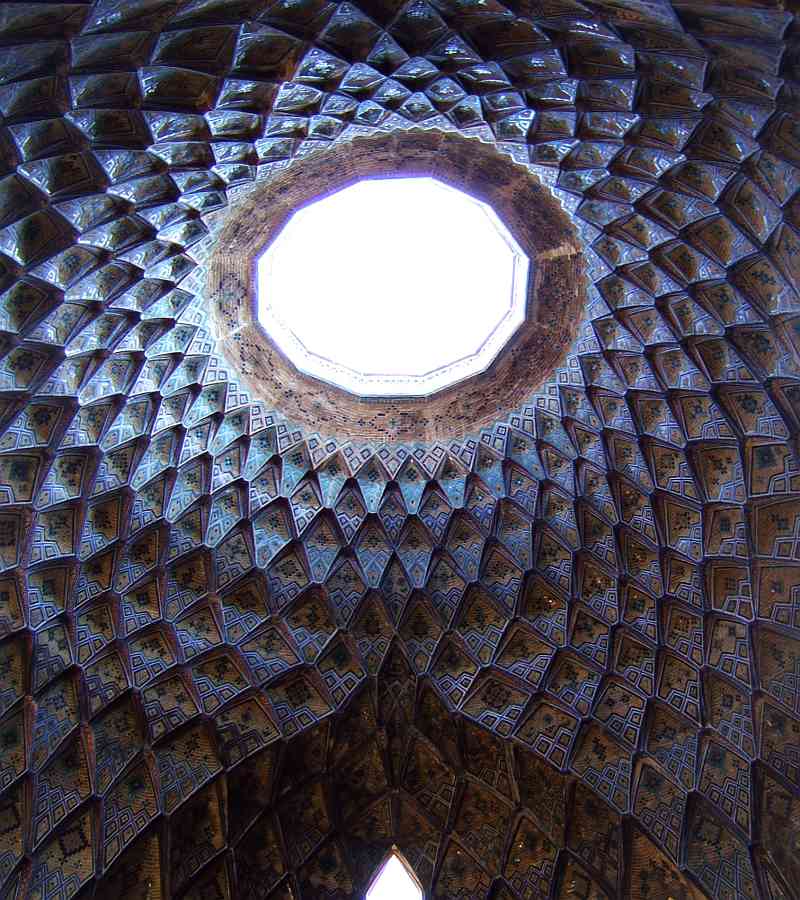
And here we are on top of the bazaar. This may look like a village hut somewhere in Mali but it's actually a huge dome in the roof of the bazaar. The whole area up there looks like this: covered with that smooth, yellow mud but with all sorts of bumps and bulges and protruding edges.
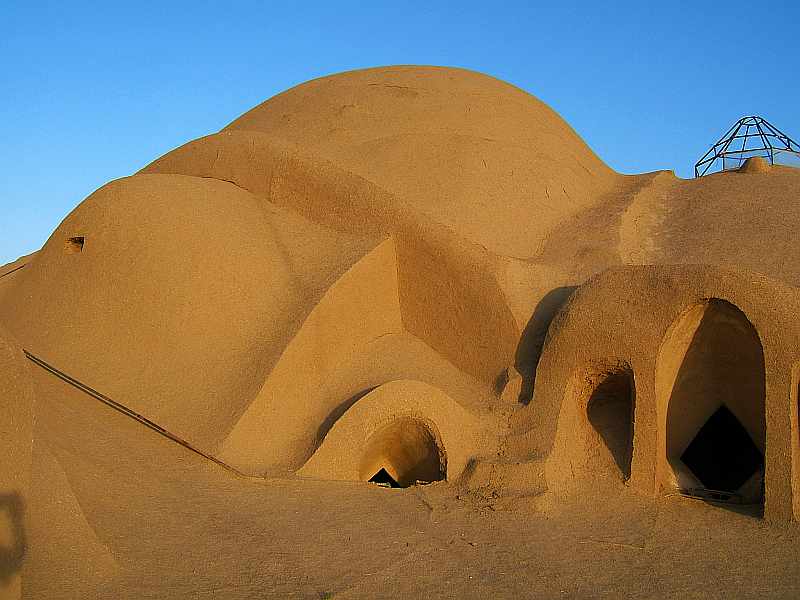
Want to see more? Go on to Iran: Esfahan, Esfahan, Esfahan or go up to Photos.
$updated from: Iran.htxt Mon 04 Mar 2024 16:04:39 trvl2 (By Vero and Thomas Lauer)$



